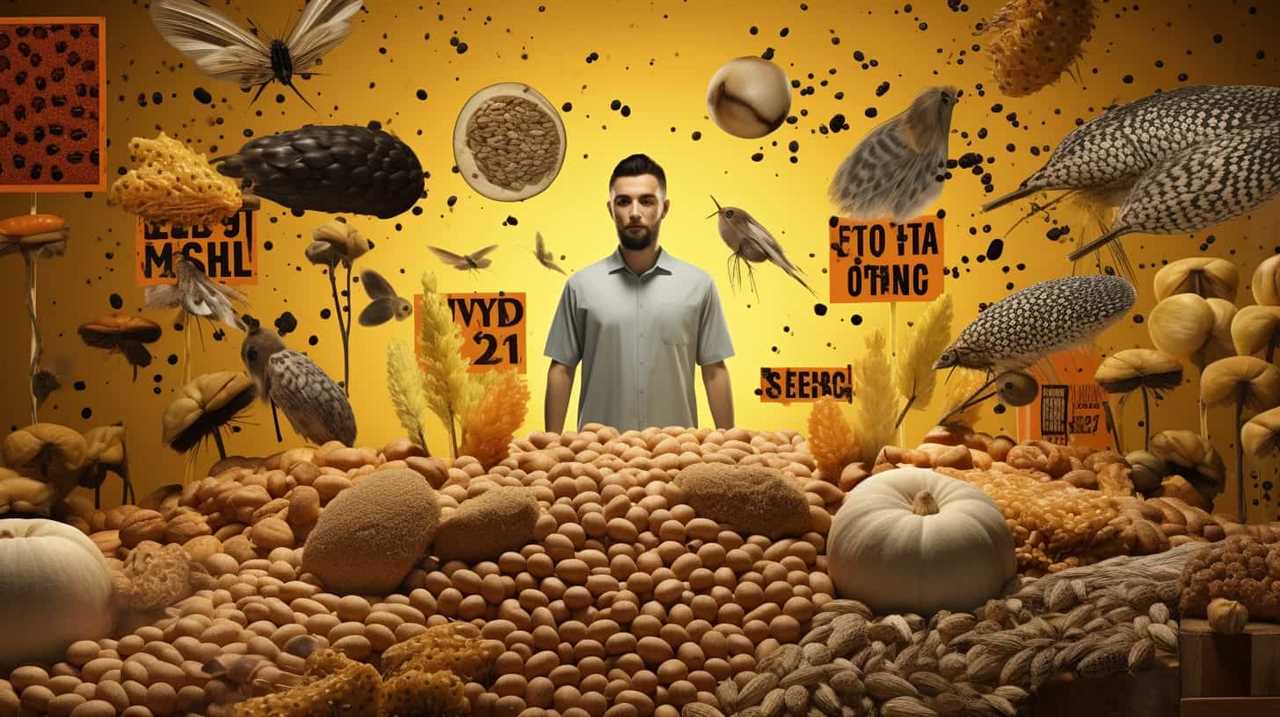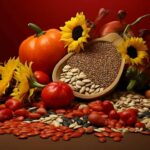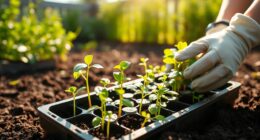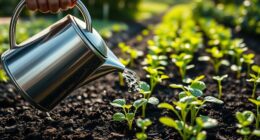We possess unique information on 14 eco-friendly methods for successful organic seed cultivation.
Did you know that by implementing these strategies, you can reduce water usage by up to 50% and eliminate the need for harmful pesticides?
Our expert tips cover everything from soil preparation to packaging and storage solutions.
With our practical advice, you’ll be able to grow high-quality organic seeds while promoting sustainability and protecting the environment.
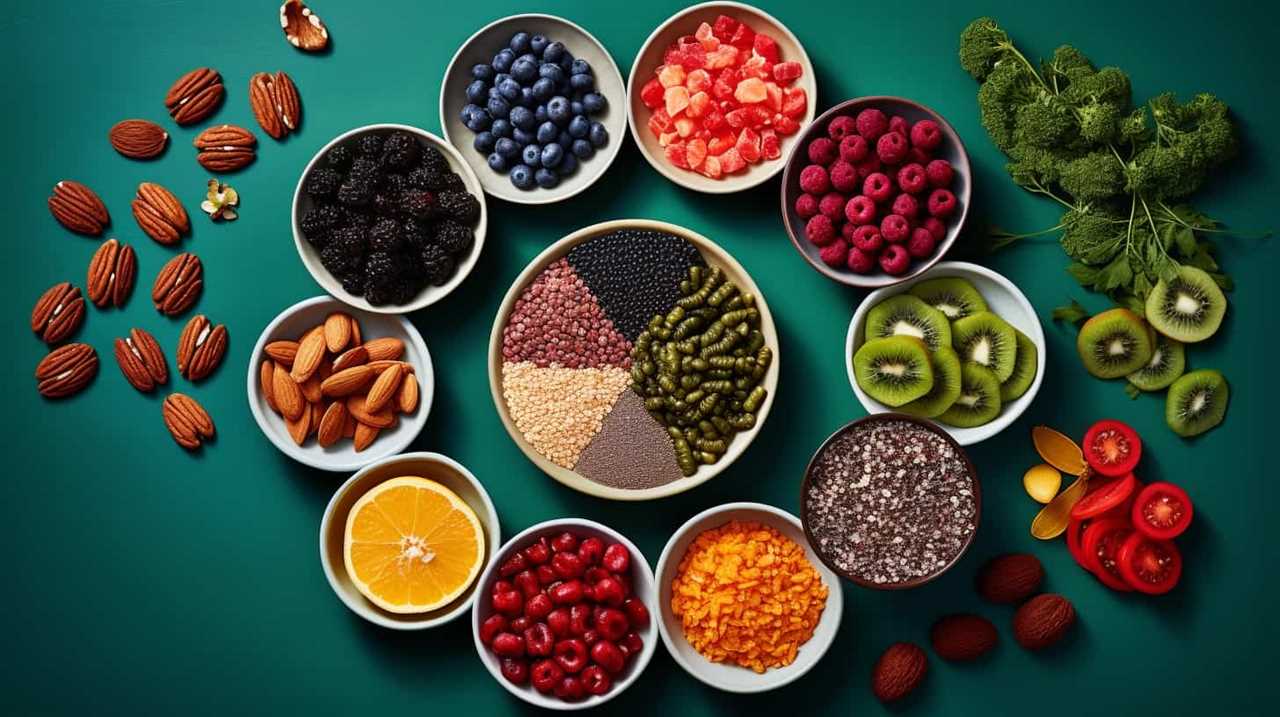
Get ready to revolutionize your seed production methods and join the movement towards liberation.
Key Takeaways
- Cover cropping and composting techniques are essential for improving soil fertility and creating nutrient-rich soil amendments.
- Natural pest control methods, such as biological control and companion planting, are crucial for managing pest populations and maintaining the health of organic crops.
- Water conservation practices, like water recycling and rainwater harvesting, along with the use of organic fertilizers, help promote sustainable agriculture.
- Biodiversity promotion, including protecting natural habitats and supporting pollinator populations, plays a vital role in organic seed production and ecosystem resilience.
Soil Preparation
We always begin our organic seed production process by carefully selecting and preparing the soil using sustainable and eco-friendly techniques. One of the key practices we employ is cover cropping.
Cover crops are grown primarily to protect and enrich the soil. They improve soil fertility by adding organic matter, suppressing weeds, preventing erosion, and increasing beneficial soil microorganisms. By planting cover crops such as legumes, grasses, and clovers, we ensure that the soil remains healthy and nutrient-rich, providing an ideal environment for seed production.
Additionally, we utilize various methods to enhance soil fertility, such as composting, crop rotation, and the use of natural amendments like bone meal and kelp. These techniques not only promote sustainable agriculture but also contribute to the liberation of our soil from chemical dependence, leading to healthier, more resilient seed crops.

Composting Techniques
Let’s talk about the importance of composting techniques in organic seed production.
Effective composting methods play a vital role in creating nutrient-rich soil amendments that promote healthy plant growth.
Effective Composting Methods
How can we effectively implement composting techniques for successful organic seed production?
Composting is a vital practice that helps create nutrient-rich soil amendments necessary for healthy plant growth. There are two main methods for composting: aerobic composting and vermicomposting.
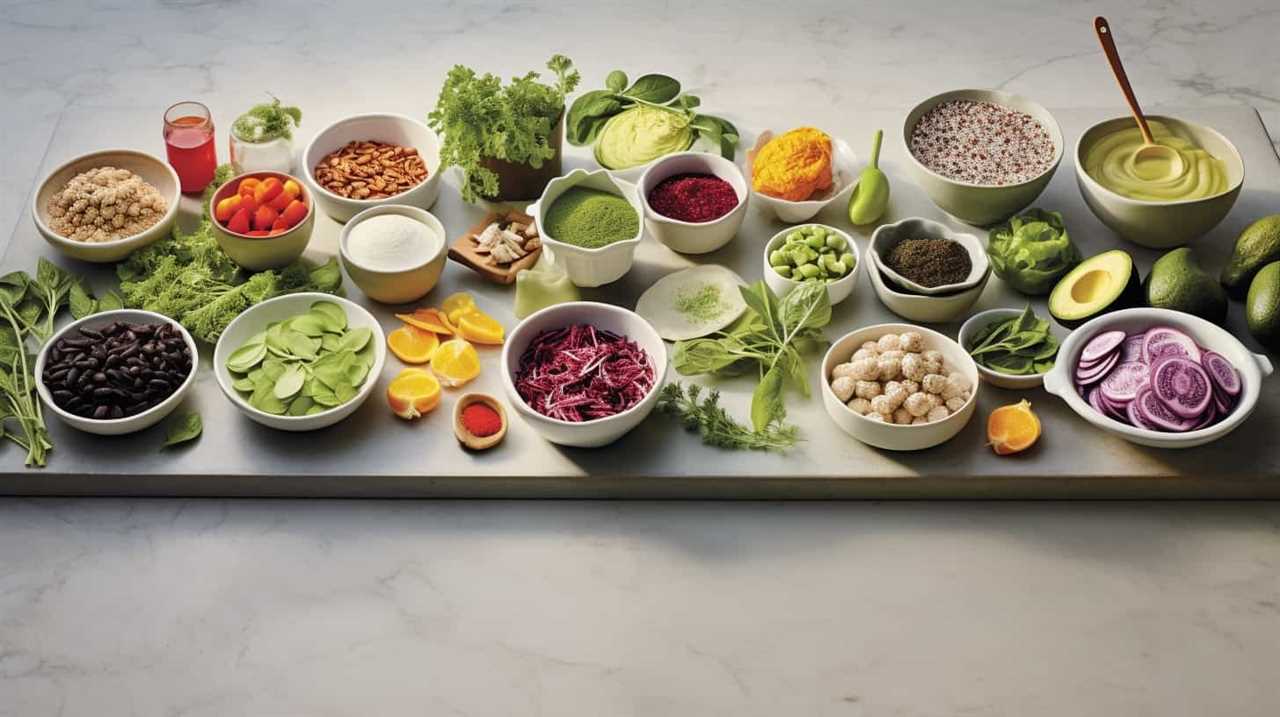
Aerobic composting involves the use of oxygen to break down organic materials into compost. This process requires turning the compost regularly to ensure proper aeration.
Vermicomposting, on the other hand, utilizes worms to decompose organic waste into nutrient-rich vermicompost.
To effectively implement these techniques, it’s important to maintain a proper balance of carbon-rich and nitrogen-rich materials, monitor moisture levels, and provide optimal conditions for microbial activity.
By adopting these composting methods, we can create high-quality soil amendments that will promote the growth and development of organic seeds.

Now, let’s move on to the next section and explore nutrient-rich soil amendments in more detail.
Nutrient-Rich Soil Amendments
To continue our exploration of organic seed production techniques, let’s delve into the topic of nutrient-rich soil amendments, specifically focusing on composting techniques.
Composting is an effective method to enrich the soil and provide organic amendments that promote healthy plant growth. By composting organic materials such as kitchen scraps, yard waste, and manure, we can create a nutrient-rich soil amendment that replenishes essential nutrients and improves soil structure.
The process of composting involves layering organic materials, maintaining proper moisture levels, and turning the pile regularly to promote decomposition. As the organic matter breaks down, it releases nutrients that are readily available to plants, enhancing their growth and overall health.
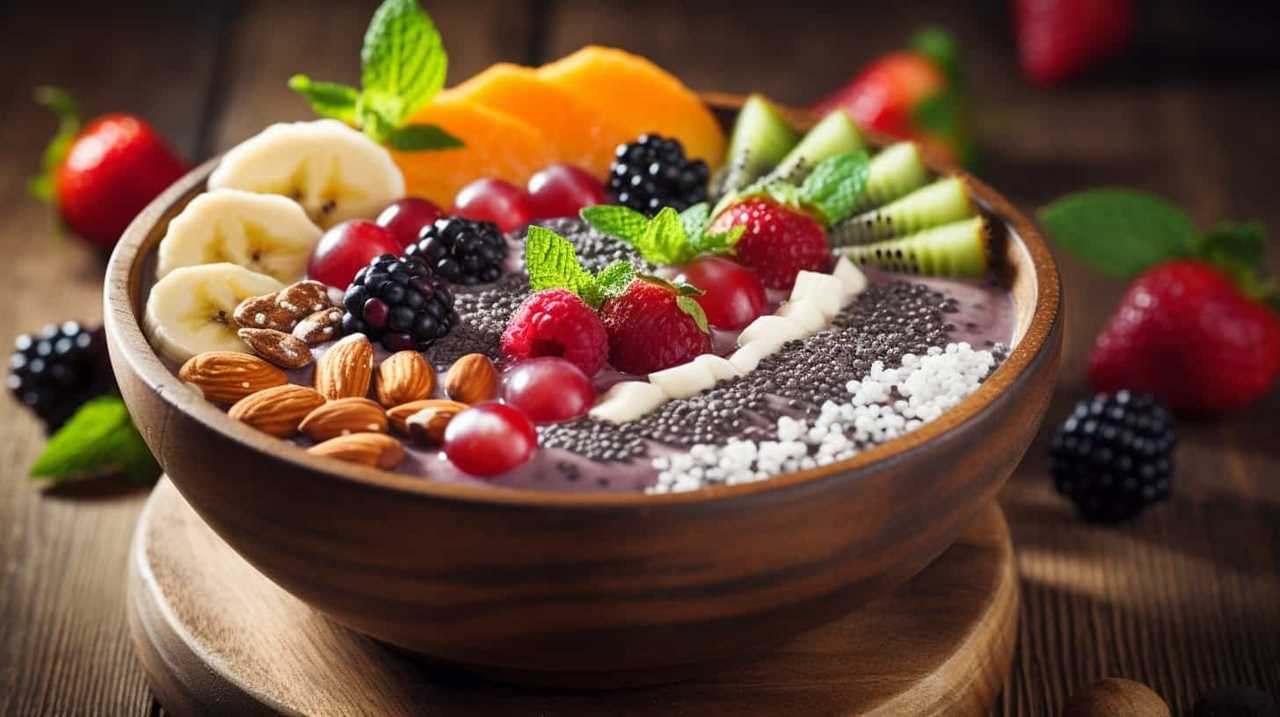
Natural Pest Control
While implementing green techniques for successful organic seed production, we prioritize natural pest control methods to ensure the health and productivity of our crops. By utilizing biological control and companion planting strategies, we can effectively manage pests without the use of harmful chemicals. Biological control involves introducing beneficial insects or organisms that prey on pests, such as ladybugs for aphids or nematodes for soil-borne pests. Companion planting, on the other hand, involves planting certain crops together to deter pests or attract beneficial insects. For example, planting marigolds alongside tomatoes can repel nematodes, while attracting pollinators like bees.
To further illustrate the benefits of natural pest control, here is a table showcasing some common pests and their natural control methods:
| Pest | Natural Control Method | Benefits |
|---|---|---|
| Aphids | Ladybugs, lacewings | Non-toxic solution |
| Slugs | Ducks, copper barriers | Environmentally friendly |
| Tomato hornworms | Braconid wasps | Preserves biodiversity |
| Cabbage worms | Nasturtiums, Bt (Bacillus thuringiensis) | Promotes ecosystem balance |
Crop Rotation Strategies
For our successful organic seed production, we employ crop rotation strategies to optimize soil health and minimize the risk of pests and diseases.
Crop rotation benefits us in several ways. First, it helps break pest and disease cycles by interrupting their life cycles and reducing their populations. Different crops have different nutrient requirements, so rotating crops allows the soil to replenish specific nutrients while preventing nutrient depletion. Additionally, crop rotation helps control weeds by disrupting their growth patterns and reducing their competitiveness.
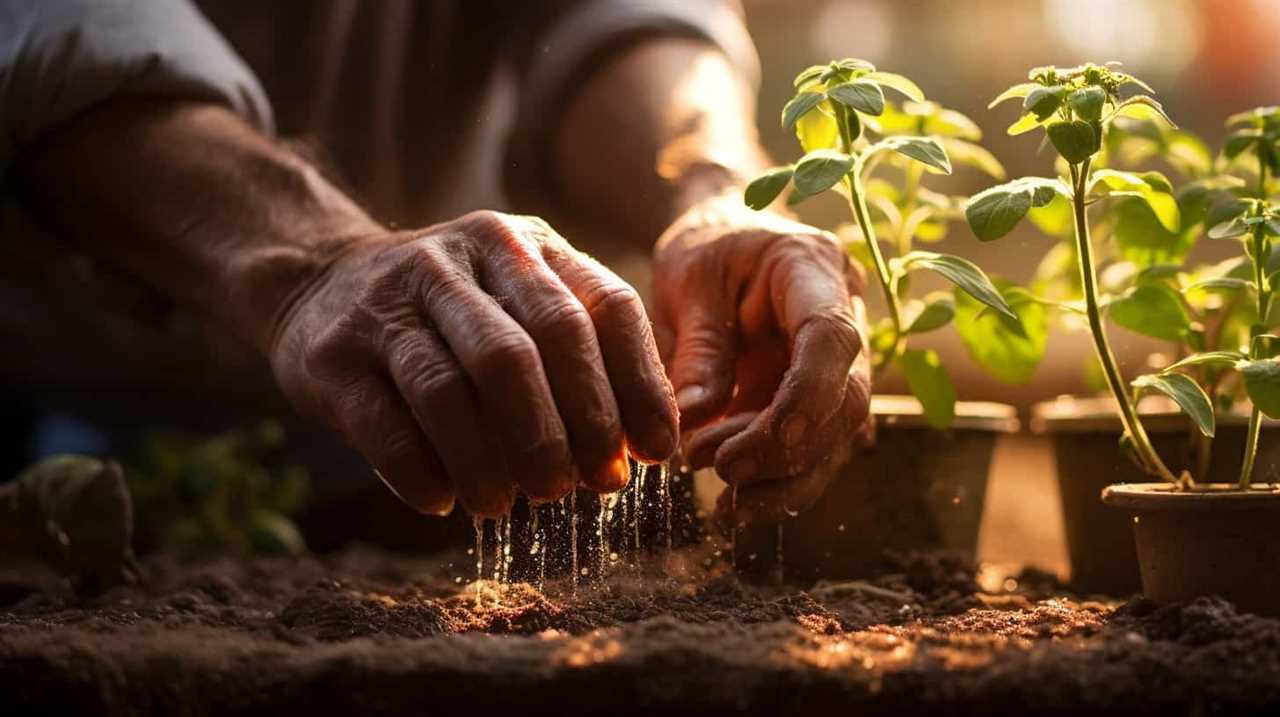
To implement effective crop rotation techniques, we consider factors such as crop family, nutrient needs, and pest and disease susceptibility. By carefully planning our crop rotation, we can maximize soil fertility, minimize the need for chemical inputs, and promote overall plant health.
Now let’s delve into the next section about water conservation methods to further enhance our sustainable seed production practices.
Water Conservation Methods
We implement various water conservation methods to ensure efficient and sustainable organic seed production. One of the key methods we employ is water recycling. By capturing and treating water used in the production process, we’re able to reuse it for irrigation and other purposes, reducing our overall water consumption.
Additionally, we practice rainwater harvesting to further conserve water resources. Through the use of collection systems, we capture and store rainwater, which can then be used during dry periods to supplement irrigation needs.
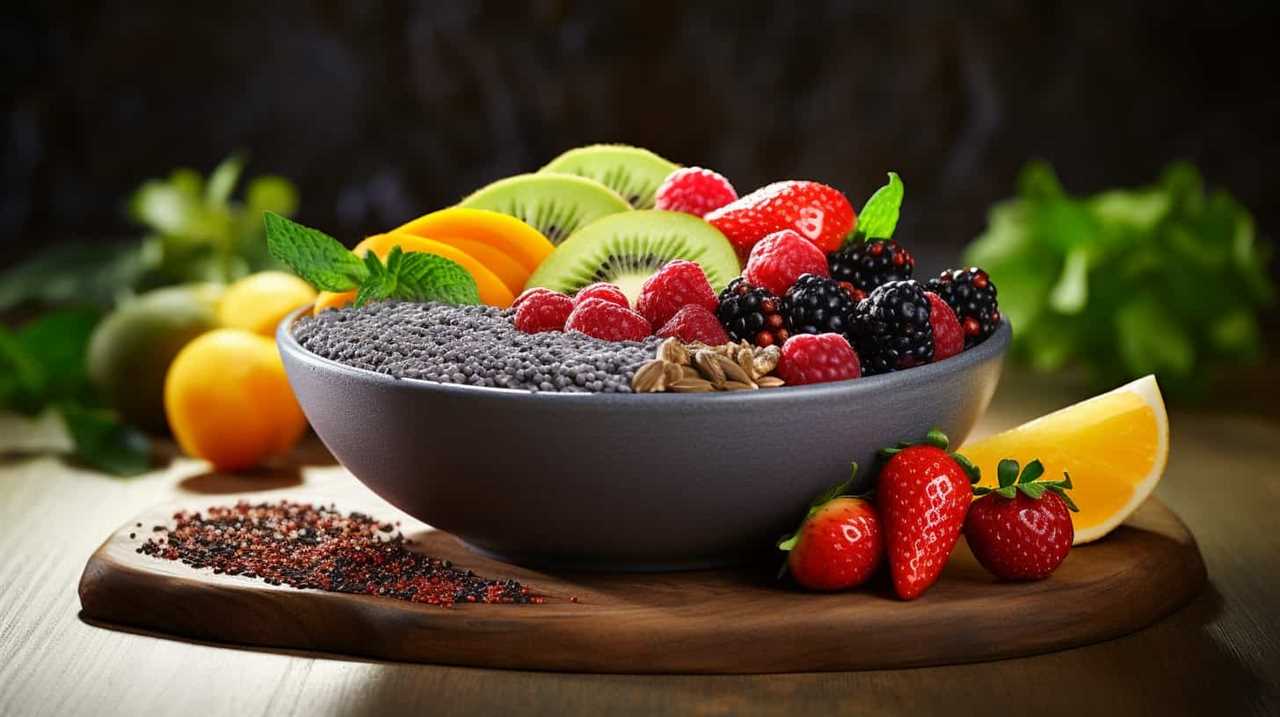
These methods not only help us conserve water but also contribute to the overall sustainability of our operations. By implementing these practices, we’re able to reduce our reliance on traditional water sources and minimize our impact on the environment.
Organic Fertilizer Application
To ensure optimal nutrient levels for our organic seed production, we regularly apply organic fertilizers, incorporating them into our cultivation practices. Organic fertilizers are essential for maintaining soil fertility and promoting healthy plant growth.
Here are three types of organic fertilizers that we use:
- Compost: We create our own compost by combining organic matter such as kitchen scraps, yard waste, and livestock manure. This rich compost provides a balanced mix of nutrients that nourish our plants.
- Fish emulsion: Made from fermented fish, this liquid fertilizer is a great source of nitrogen and other essential nutrients. It’s easily absorbed by plants and helps promote vigorous growth.
- Bone meal: Derived from ground animal bones, bone meal is rich in phosphorus, which is crucial for root development and flowering. It’s particularly beneficial for fruiting plants.
When it comes to application techniques, we apply organic fertilizers evenly to the soil surface around the plants, taking care not to directly contact the leaves or stems. This ensures that the nutrients are readily available to the roots without causing any harm. Additionally, we incorporate the fertilizers into the soil using a gentle rake or hoe, allowing them to gradually release their nutrients over time.
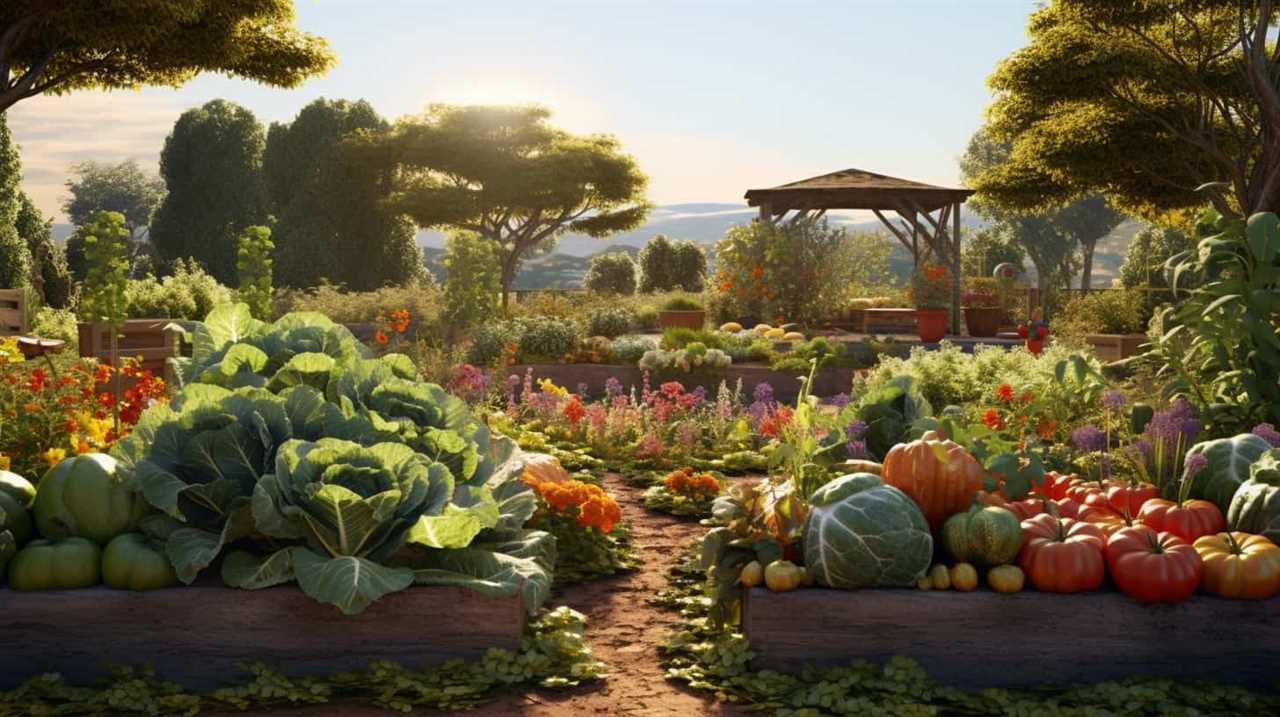
Weed Management Approaches
To maintain optimal nutrient levels and promote healthy plant growth in our organic seed production, we incorporate effective and sustainable weed management approaches.
We understand that weeds can compete with our crops for nutrients, water, and sunlight, which can negatively impact seed production. Therefore, we utilize intercropping benefits to suppress weed growth.
Intercropping involves planting different crops together in close proximity, creating a diverse and mutually beneficial ecosystem. By carefully selecting companion plants that naturally repel weeds or have allelopathic properties, we can minimize weed establishment and growth.
Additionally, we implement weed suppression techniques such as mulching, hand weeding, and mechanical cultivation. These methods help to smother weeds, remove them manually, or disturb their growth without relying on synthetic herbicides.
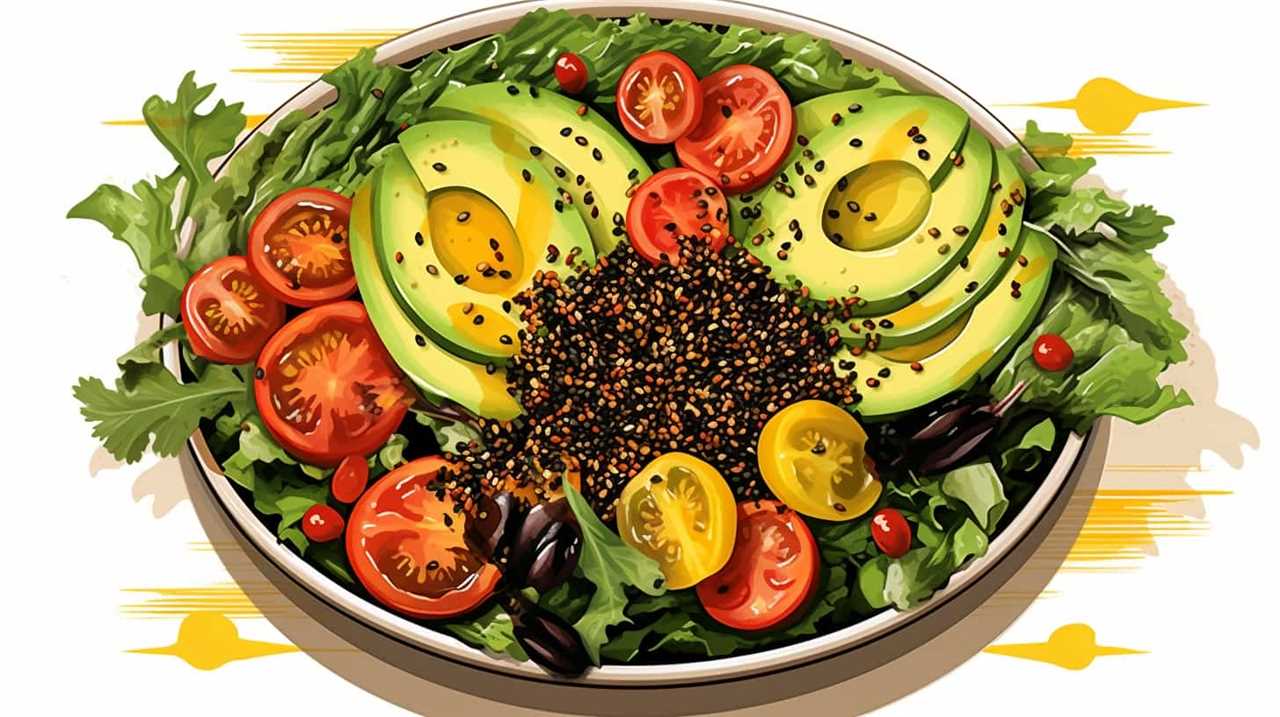
By employing these sustainable weed management practices, we can ensure the health and productivity of our organic seed production.
Moving forward, let’s explore how we can further promote biodiversity in our farming systems.
Biodiversity Promotion
Biodiversity promotion plays a crucial role in successful organic seed production. By enhancing ecosystem resilience, we can create a more robust and balanced environment for our crops.
Additionally, supporting pollinator populations is essential for ensuring effective pollination and seed production.
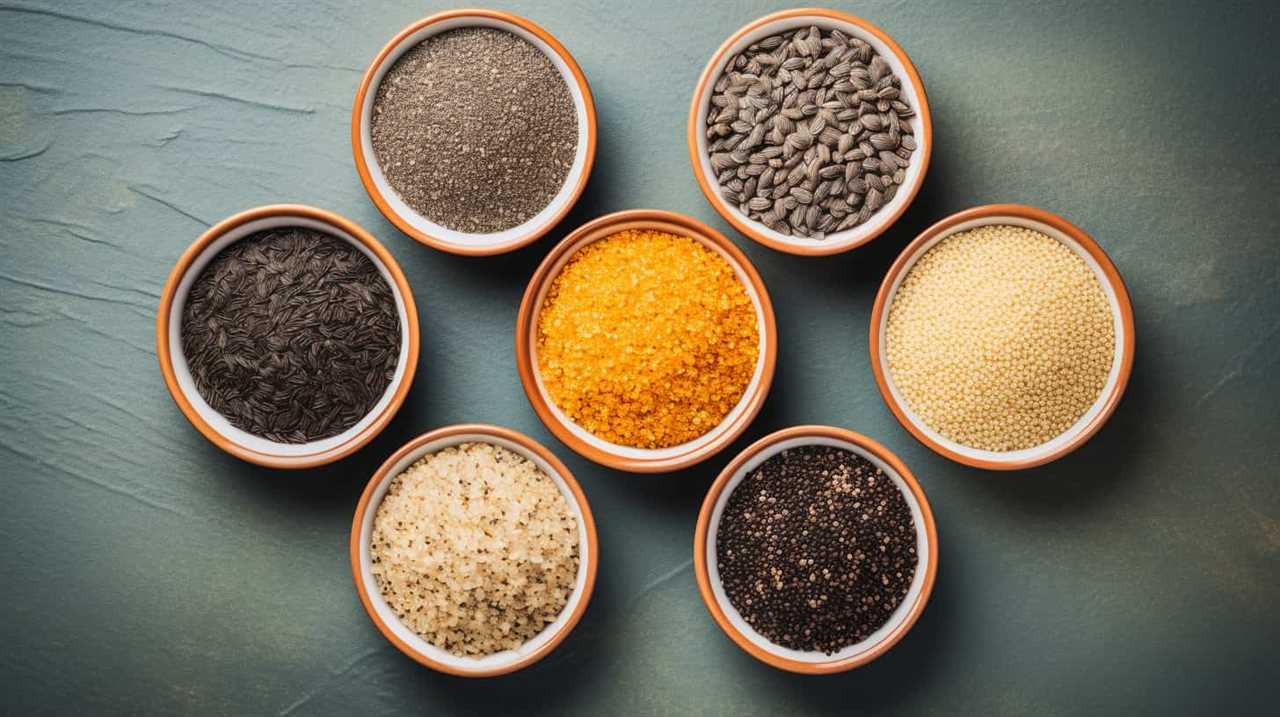
Enhancing Ecosystem Resilience
Biodiversity is crucial for the health and stability of ecosystems, especially in the face of climate change. Here are three ways we can enhance ecosystem resilience through biodiversity promotion:
- Protect and restore natural habitats: By preserving and restoring native habitats in and around organic seed production areas, we can create a diverse ecological landscape that supports a wide range of plant and animal species. This promotes natural pollination, pest control, and soil fertility.
- Encourage crop diversity: Planting a variety of crops helps to diversify the ecosystem and reduce the risk of crop failure due to pests or diseases. By growing a mix of different species and varieties, we can also increase genetic diversity within our seed stocks, making them more resilient to environmental changes.
- Promote beneficial insects and wildlife: Creating habitat for beneficial insects and wildlife, such as pollinators, predators, and decomposers, can help maintain a balanced ecosystem. This can be done by planting native flowering plants, maintaining hedgerows, and providing nesting sites and food sources for wildlife.
Supporting Pollinator Populations
We actively promote the flourishing of pollinator populations to enhance biodiversity in organic seed production.
One of the key ways we achieve this is through pollinator friendly planting. By selecting plants that attract and support pollinators, we create an inviting environment for bees, butterflies, and other beneficial insects. These plants not only provide a vital food source for pollinators, but also offer shelter and nesting sites.
Additionally, we prioritize habitat restoration to further support pollinator populations. This involves creating diverse habitats that mimic natural ecosystems, such as meadows, hedgerows, and wildflower patches. These habitats provide a variety of resources for pollinators throughout their lifecycle, including nectar, pollen, and host plants for larval development.

Pollinator Attraction Techniques
One effective way to attract pollinators in organic seed production is by incorporating a variety of flowering plants into the agricultural landscape. By providing a diverse range of blooms, we can create an inviting environment for bees, butterflies, and other vital pollinators.
Here are three key points to consider when attracting pollinators:
- Pollinator conservation: Choose native plants that are well-suited to your region. These plants have evolved alongside local pollinators, ensuring a mutually beneficial relationship and promoting conservation efforts.
- Flower selection: Opt for plants with a long blooming period to provide a continuous food source for pollinators. Additionally, select flowers with different shapes, sizes, and colors to attract a wider range of pollinator species.
- Creating habitat: Plant flowers in clusters or patches to create attractive feeding areas for pollinators. Incorporate a mix of annuals and perennials to provide a sustainable habitat that can support pollinators throughout the year.
Greenhouse and Shade Net Management
To continue optimizing pollinator attraction techniques, incorporating greenhouse and shade net management is essential. Proper management of the greenhouse environment can significantly impact the success of organic seed production. From temperature control to ventilation, every aspect must be carefully monitored and adjusted to create an ideal growing environment for the plants. Additionally, the use of shade nets can help regulate light intensity and reduce heat stress on the crops. By strategically placing shade nets, we can manipulate the amount of sunlight reaching the plants, ensuring they receive the optimal amount for growth. This technique is particularly useful in regions with high temperatures or intense sunlight. Below is a table summarizing some effective greenhouse and shade net management techniques:
| Greenhouse Management | Shade Net Techniques |
|---|---|
| Temperature control | Adjusting shade density |
| Ventilation | Proper placement and tension |
| Humidity control | Monitoring light intensity |
| Pest and disease management | Regular maintenance |
Sustainable Irrigation Practices
Now let’s explore sustainable irrigation practices to further enhance the success of organic seed production.
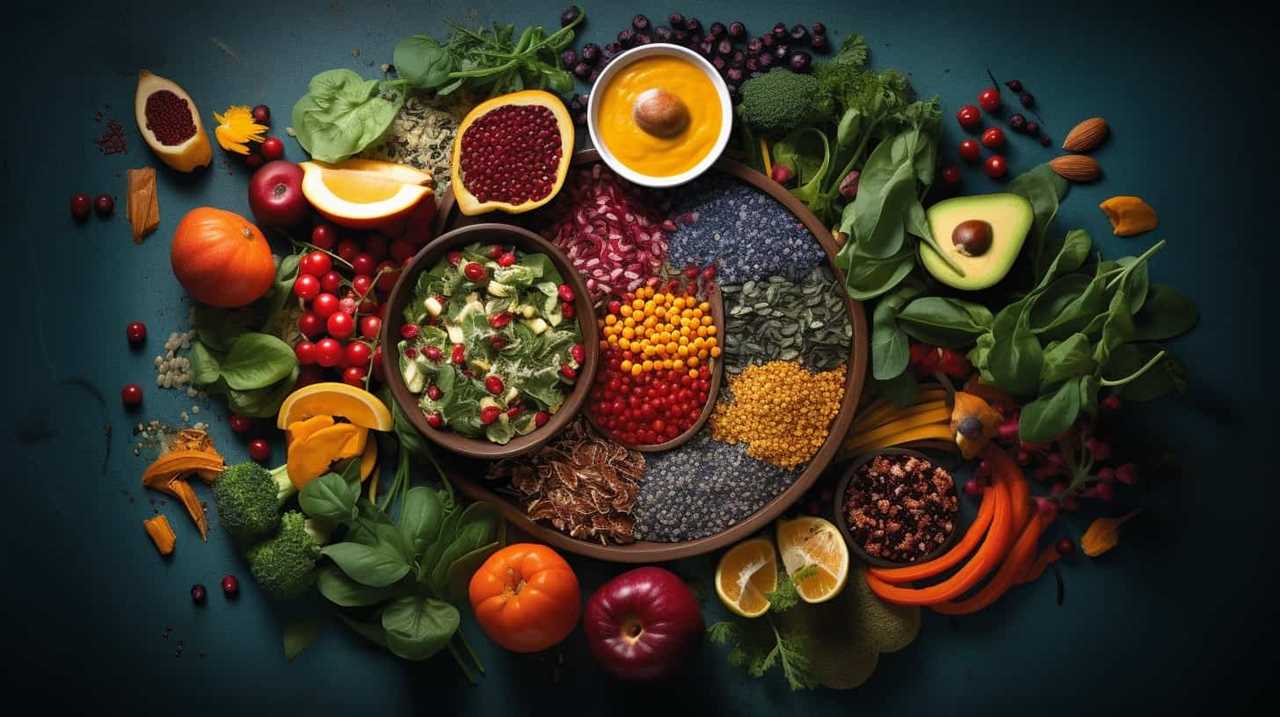
By incorporating drip irrigation, we can provide water directly to the plant roots, minimizing water loss due to evaporation. This efficient method not only conserves water but also reduces the risk of disease and weed growth.
Rainwater harvesting is another eco-friendly technique that allows us to collect and store rainwater for irrigation purposes. This not only reduces our reliance on freshwater sources but also helps to prevent runoff and erosion.
Additionally, using mulch or cover crops can help retain moisture in the soil, reducing the need for frequent irrigation.
Integrated Disease Management
Continuing our exploration of sustainable practices in organic seed production, we can effectively manage diseases by integrating various strategies. Integrated disease management is a holistic approach that combines cultural, biological, and chemical methods to prevent and control diseases. One key aspect of integrated pest management is to promote plant health through proper soil fertility and irrigation practices, as healthy plants are more resistant to diseases. Additionally, crop rotation and intercropping can help disrupt disease cycles and reduce pathogen buildup in the soil. Biological control agents, such as beneficial insects and microorganisms, can also be employed to suppress pests and diseases. Finally, when necessary, organic-approved fungicides can be used for targeted fungal disease control. By implementing these integrated disease management strategies, organic seed producers can minimize the impact of diseases on their crops and ensure the production of high-quality seeds.
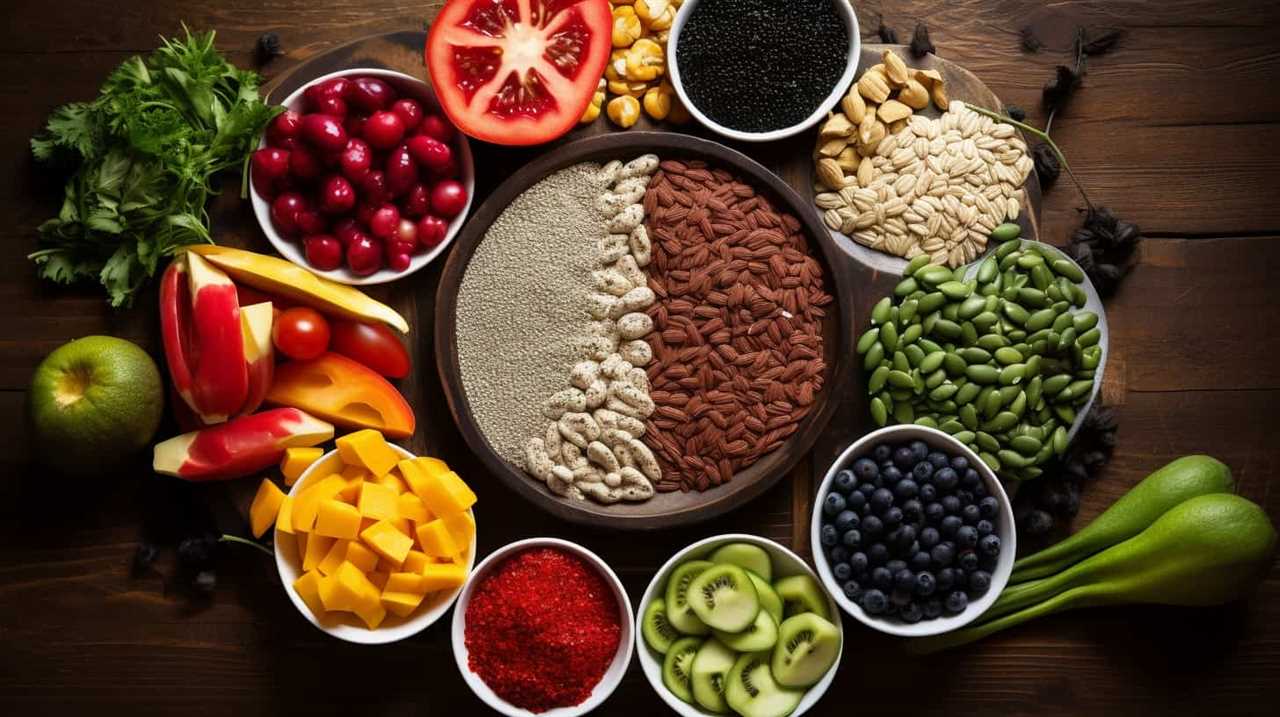
With disease management strategies in place, the next step in organic seed production is harvesting and post-harvest handling.
Harvesting and Post-Harvest Handling
When it comes to harvesting and post-harvest handling in organic seed production, there are several important points to consider.
First, storage and preservation methods play a crucial role in maintaining the quality and viability of the seeds.
Second, implementing quality control measures throughout the process ensures that only the best seeds are selected for further use.
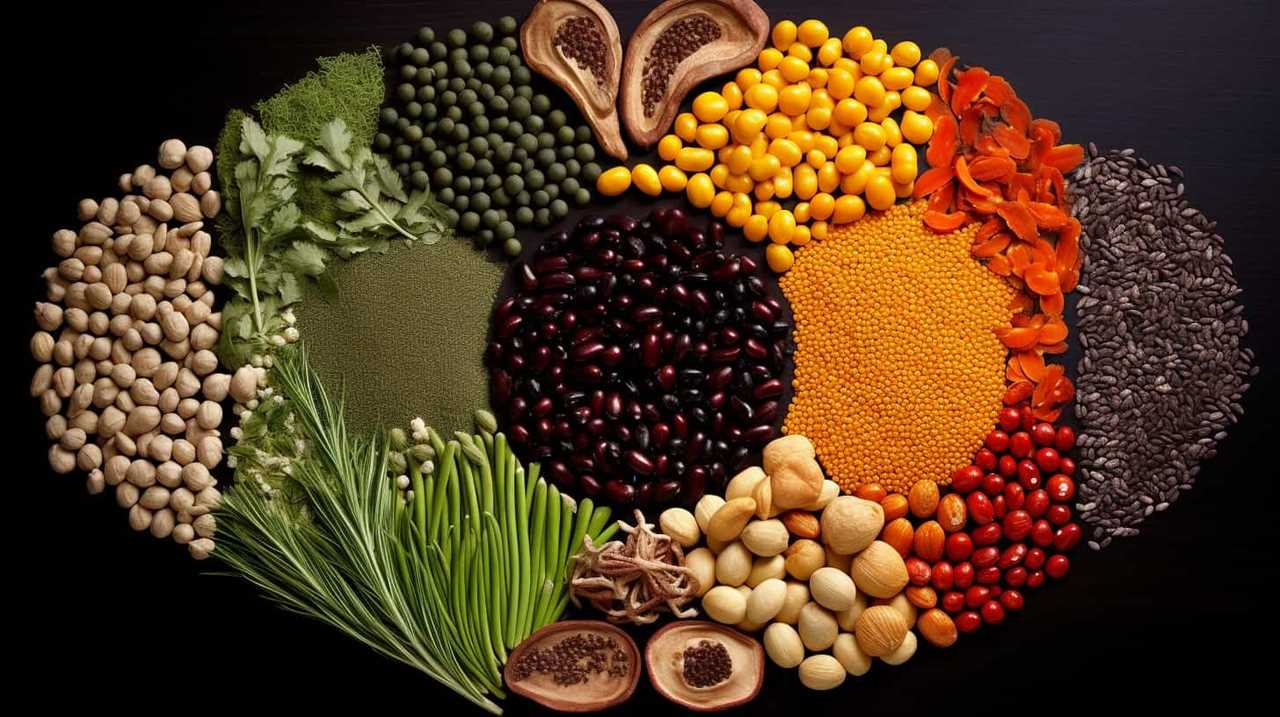
Lastly, handling perishable produce requires careful attention to prevent any damage or loss during transportation and storage.
Storage and Preservation Methods
We employ efficient storage and preservation methods for successful organic seed production, ensuring optimal quality and viability throughout harvesting and post-harvest handling. When it comes to storing organic seeds, we follow specific techniques to maintain their viability and prevent deterioration.
Here are some key practices we implement:
- Temperature control: We store seeds in cool and dry conditions, as exposure to high temperatures can reduce their viability.
- Moisture management: We carefully monitor and maintain the moisture content of stored seeds to prevent mold growth and maintain their quality.
- Packaging: We use airtight containers or moisture-resistant packaging to protect the seeds from moisture, pests, and external pollutants.
By implementing these storage techniques, we can preserve the viability of organic seeds and ensure their quality for future use.
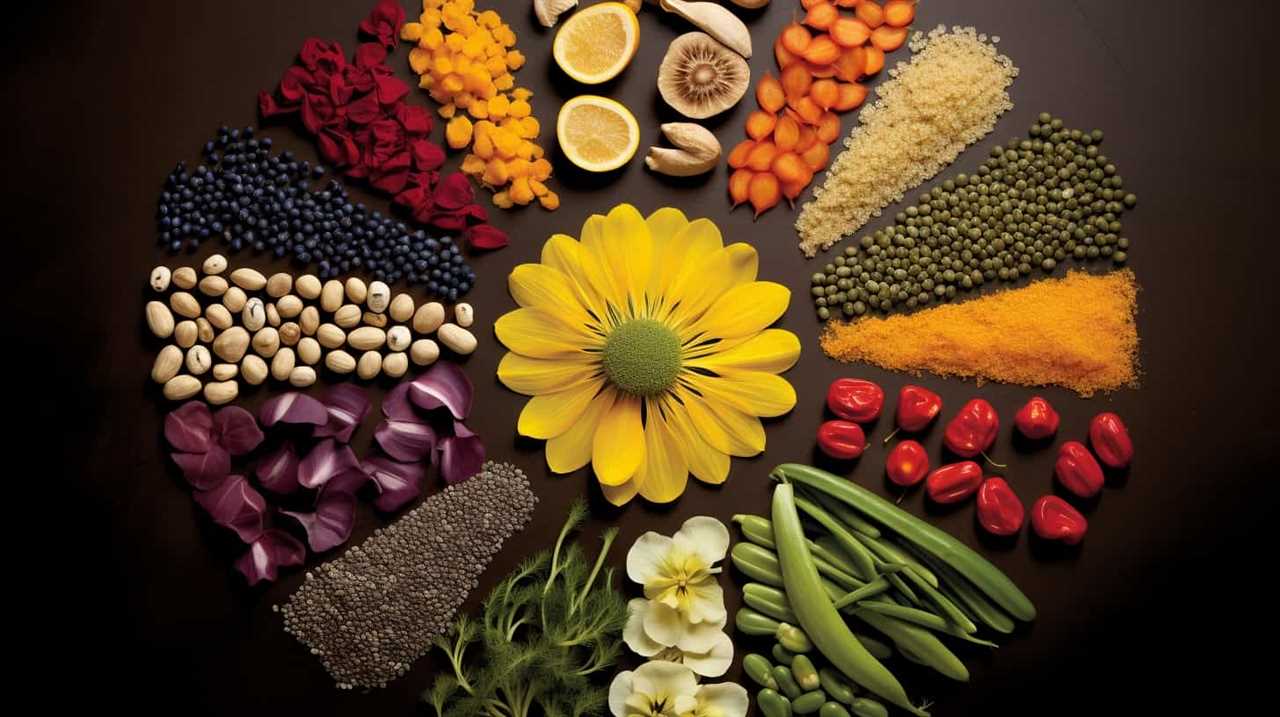
Now, let’s delve into the next crucial aspect of organic seed production: quality control measures.
Quality Control Measures
To ensure the highest quality standards in organic seed production, we prioritize thorough quality control measures during both harvesting and post-harvest handling. Quality inspection is a crucial step in the process, as it allows us to assess the viability of the seeds and ensure that only the best ones are selected for further use. During harvesting, we carefully monitor the plants, looking for signs of maturity and optimal seed development. This ensures that we collect seeds at the right time, when their viability is at its peak. In the post-harvest phase, we employ various techniques to maintain seed quality, such as proper cleaning, drying, and storage methods. By following these meticulous procedures, we guarantee that our organic seeds are of the highest quality and meet the expectations of our discerning customers.
| Quality Control Measures | Harvesting | Post-Harvest Handling |
|---|---|---|
| Quality Inspection | Assess seed maturity and viability | Ensure only the best seeds are selected |
| Seed Viability | Monitor plants for maturity | Employ proper cleaning, drying, and storage methods |
In the next section, we will discuss the importance of handling perishable produce and the techniques involved in ensuring its freshness and quality.
Handling Perishable Produce
As we prioritize maintaining freshness and quality in organic seed production, we employ green techniques for handling perishable produce throughout the process. To ensure minimal post-harvest losses, we’ve developed effective perishable produce handling techniques that are both environmentally friendly and practical.
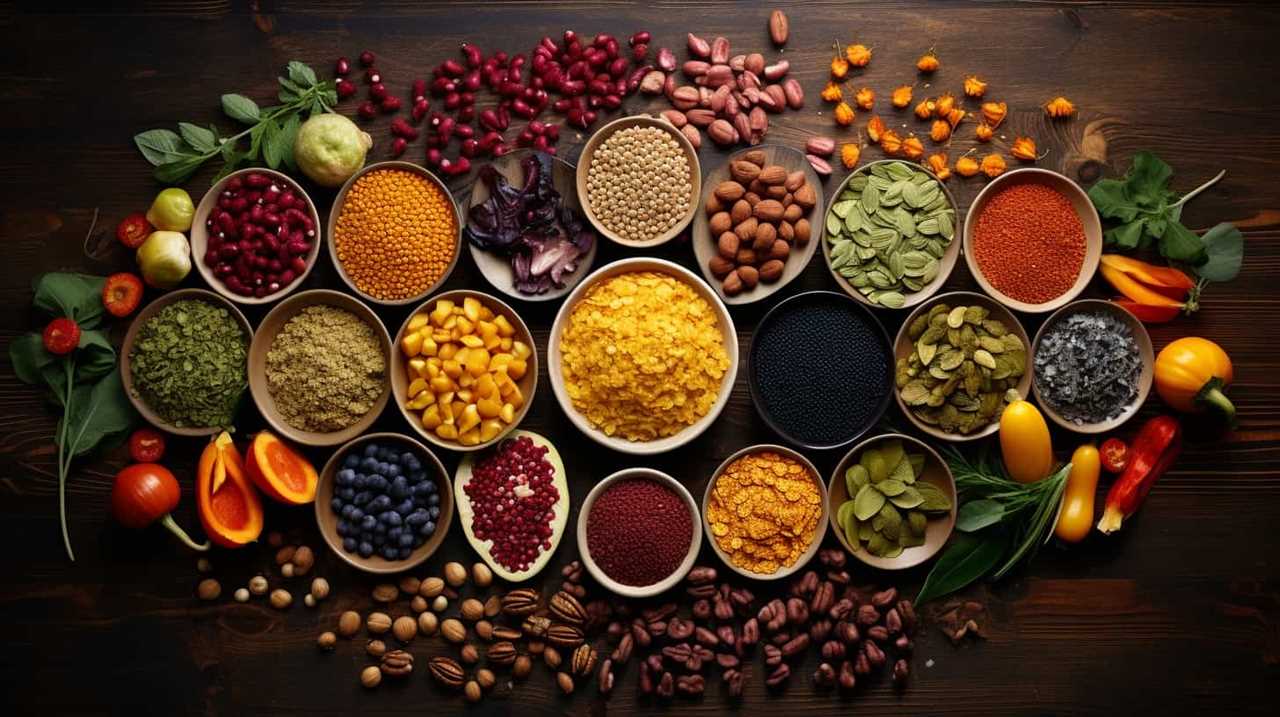
Here are three key strategies we implement:
- Gentle Harvesting: We carefully harvest the produce by hand, avoiding any unnecessary damage or bruising. This helps to preserve the quality and extend the shelf life of the perishable produce.
- Proper Cooling: Immediately after harvest, we cool the produce to the appropriate temperature using energy-efficient methods such as hydrocooling or forced-air cooling. This helps to slow down the ripening process and reduce spoilage.
- Efficient Packaging: We use eco-friendly packaging materials that are designed to provide optimal ventilation and protection for the perishable produce. This not only helps to maintain freshness but also minimizes waste.
Packaging and Storage Solutions
Using sustainable materials and proper storage techniques is crucial for ensuring the quality and longevity of organic seeds. When it comes to packaging, opting for sustainable options is essential. Look for packaging materials that are biodegradable, recyclable, or made from renewable resources. This not only reduces waste but also aligns with the principles of organic farming.
Eco-friendly storage solutions are equally important. Organic seeds should be stored in a cool, dry, and dark place to maintain their viability. Avoid exposure to direct sunlight, moisture, and extreme temperatures, as these can degrade the seeds over time. Utilizing airtight containers or resealable bags can also help protect the seeds from pests and moisture.
Conclusion
In conclusion, by implementing these 14 green techniques for successful organic seed production, we can ensure a sustainable and environmentally friendly approach to farming.
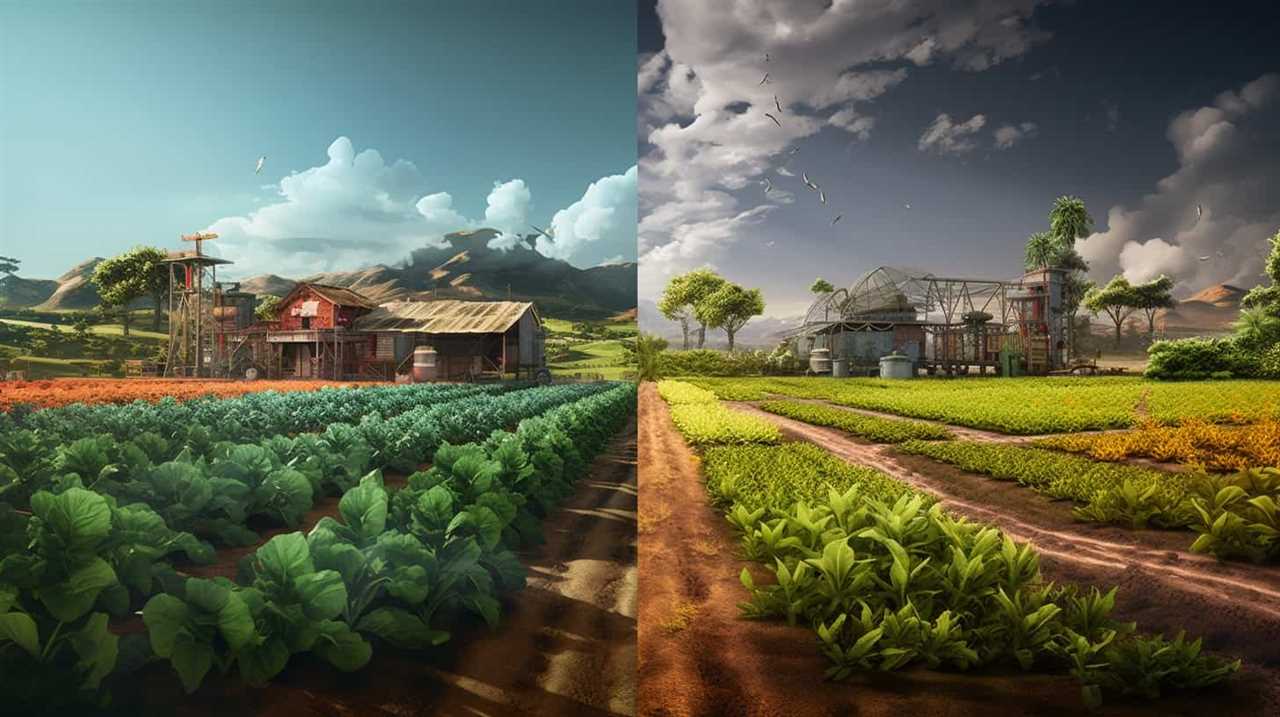
Through soil preparation, composting techniques, and natural pest control, we can create a healthy growing environment for our crops.
By implementing crop rotation strategies, we can prevent soil depletion and improve overall soil health.
Water conservation methods and sustainable irrigation practices help us use water more efficiently, reducing waste and protecting this precious resource.
Integrated disease management techniques allow us to control plant diseases without relying on harmful chemicals.
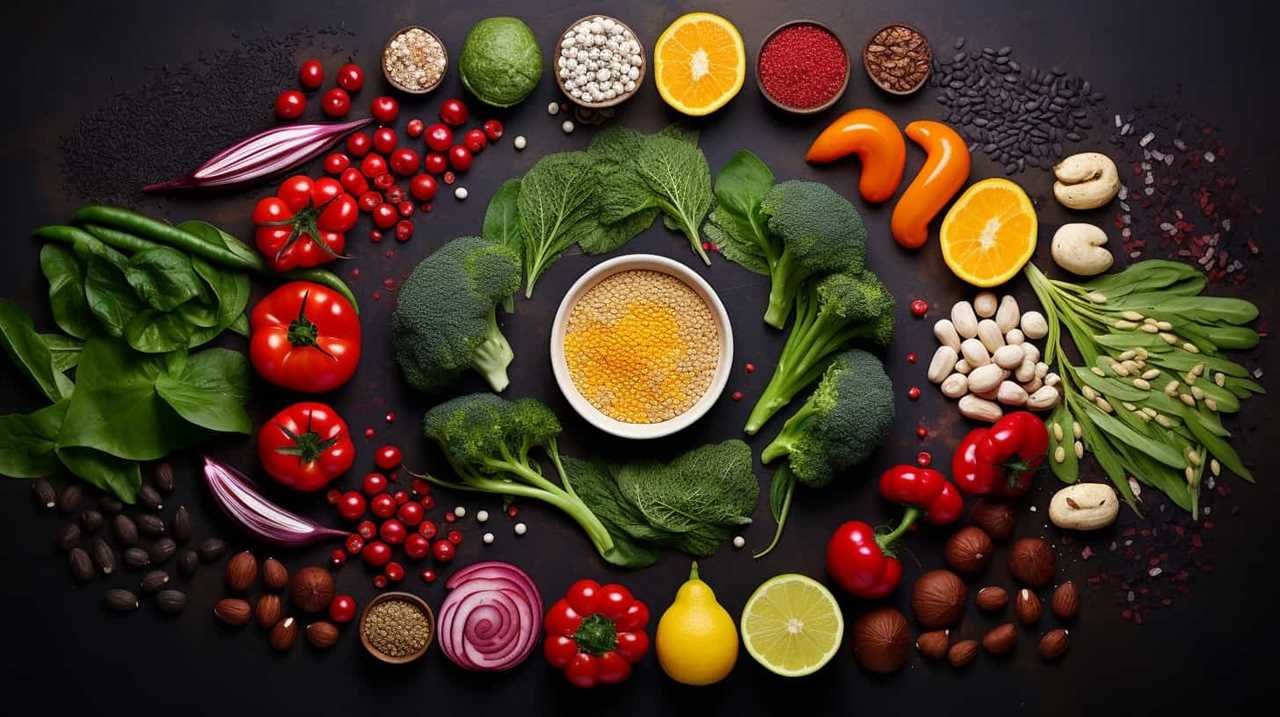
Finally, proper harvesting, packaging, and storage solutions ensure the quality and longevity of our seed products.
By embracing these practical and knowledgeable methods, we can achieve higher yields without compromising the health of our planet.
Let’s work together to create a greener future for our agricultural practices.

